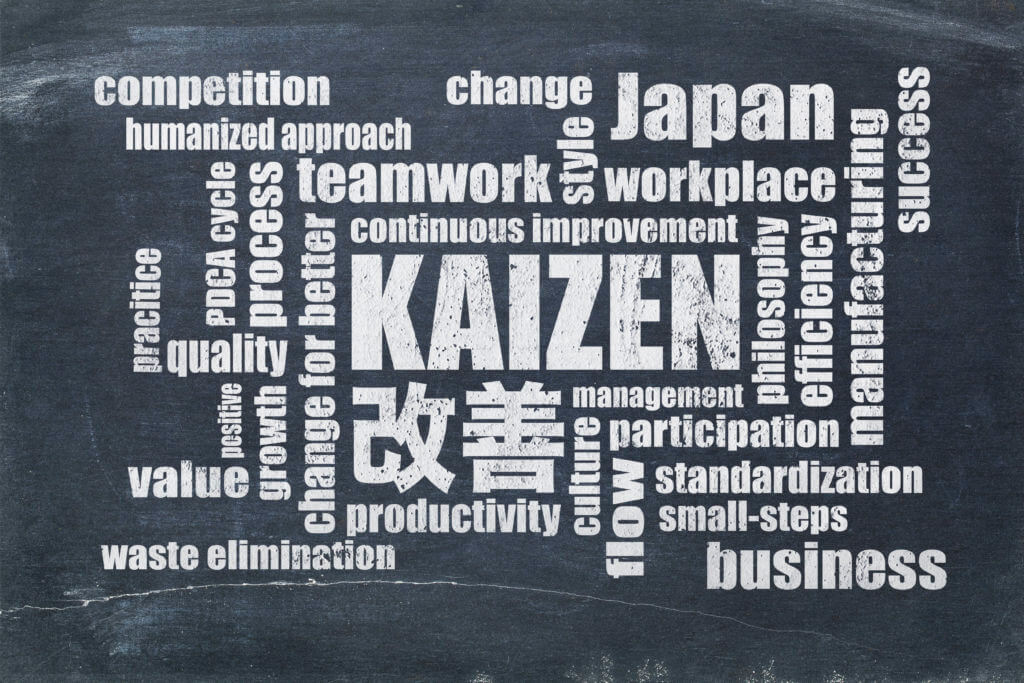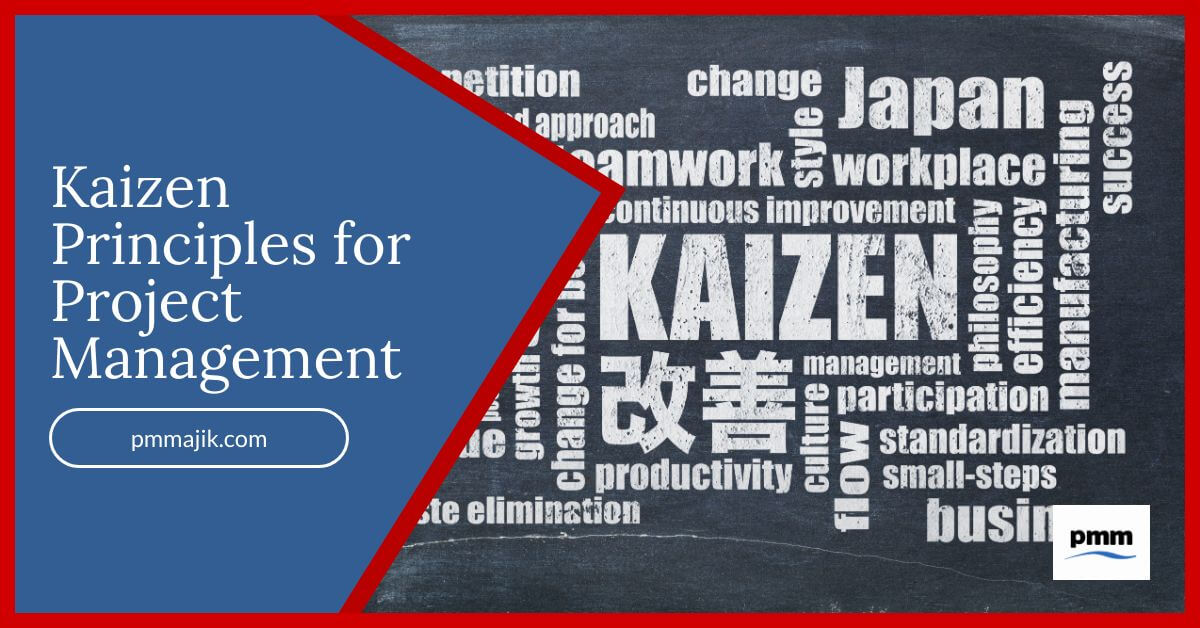Originating in Japan, Kaizen translates to “change for the good”. It is a lean philosophy which focuses on making continuous, incremental changes which involves employees at all levels of an organisation. Those small changes, over time, add up to significant changes which happen without major organisational disruption. This makes it a gentler and more employee-friendly way to make changes, grow and align more closely with the business environment.
What can Kaizen improve?
There are five main areas in which Kaizen Principles can be used for continuous improvement. In reality however, Kaizen can be applied to any area of the organisation.
Quality
The quality of products and services can be improved, in addition to changes to the work environment, practices and processes.
Cost
Ways can be sought to reduce the expenses of materials, energy and human resources.
Delivery
Movement of products within the organisation, delivery times to the customer and activities that don’t add added value can be improved or eliminated.
Management
Kaizen can be used to improve management aspects, such as, training, morale, procedures and administration, planning, IT systems, reporting and documentation.
Safety
Kaizen helps to remove unsafe working conditions and hazardous situations and decreases the risk of damage to the environment and resource depletion.
Implementing Kaizen
As Kaizen is a mind-set as opposed to a tool-kit, it is recommended that it is implemented alongside another lean methodology.

There are seven phases within the continuous cycle of Kaizen activity.
- Identify an opportunity
- Analyse the process
- Develop the best solution
- Execute the solution
- Examine the results
- Standardise the solution
- Make plans for the future
When implementing Kaizen, it is important that everyone involved in the process starts to think about their work in the present and desired states, and how it can be moved from one to the other.
Implementation typically occurs in three stages.
Participation
Kaizen involves every individual with the organisation, and as such it is important to encourage everyone to participate. This can be facilitated by running awareness sessions and promoting Kaizen activities.
Some organisations may be in a position to offer monetary or tangible incentives to employees once Kaizen activities have been implemented.
Training and Education
Training should be offered to key members who are responsible for the rollout of the Kaizen philosophy.
Those individuals should have a thorough understanding of what the essence of Kaizen is and how it should be implemented within an organisational context, in order to meet the business’s aims and objectives.
Through training, individuals will also learn strategies to improve participation.
Quality Level Improvement
Once training is complete, a team or department should be formed to carry out the implementation and evaluation of Kaizen.
This team will focus on the implications of Kaizen in the long-term and will be responsible for its application across the organisation. They will also ensure that Kaizen aligns with the organisation’s objectives.
Benefits of Kaizen
Kaizen has some significant benefits that can enhance the organisation.
Beneficial to all
Kaizen is applicable to most types of organisation, and benefits the business, employees and customers. Employees are acknowledged and rewarded for their efforts and in turn gain a sense of worth within the organisation.
Improves teamwork
Kaizen is driven by teamwork. Employees at all levels are involved in the process of solving problems to improve processes and as such bonds are formed and team morale is boosted throughout the organisation.
When teamwork is improved it has a positive effect on cross-departmental collaborations, allowing employees who have different experiences to come together and learn from one another.
Improves efficiency
Kaizen results in improvements to processes which help to increase the quality of goods and services delivered to the customer.
Through Kaizen efficiency is boosted and time management enhanced.
Waste reduction
Within Kaizen, areas of the business process that produce unnecessary waste are identified and eliminated, reducing costs and making the business more profitable.
Disadvantages
Like any process, Kaizen has some disadvantages.
Change
No one likes change, and it is expected that there will be some resistance when implementing Kaizen. Employees may not want to use a different system, and management may fear that Kaizen is expensive to implement.
Difficult to implement
Organisations that have existing management systems may find Kaizen difficult to implement, particularly as it is a cross-organisation process. Once Kaizen has been implemented, it is difficult to revert to previous systems.
Training
Kaizen implementation requires training across the organisation which can be expensive in terms of monetary costs and time.
Lack of enthusiasm
Employees may be enthusiastic to embrace a new way of working at first however if changes are difficult to implement then they may revert to the simple and familiar ways in which they normally work and become demoralised.
Getting whole organisational buy in
Getting a whole organisation to buy into an idea is difficult. Whilst some departments may implement Kaizen and stick to it, others may not. Partial buy-in could have a positive effect on the organisation’s performance however the overall output will be negatively affected.
A method of continuous improvement, Kaizen Principles works to eliminate waste within business processes and fix defects. It provides great benefits to organisations, employees and customers however it has a number of advantages and disadvantages which should be taken into account before a decision is made to implement it.






